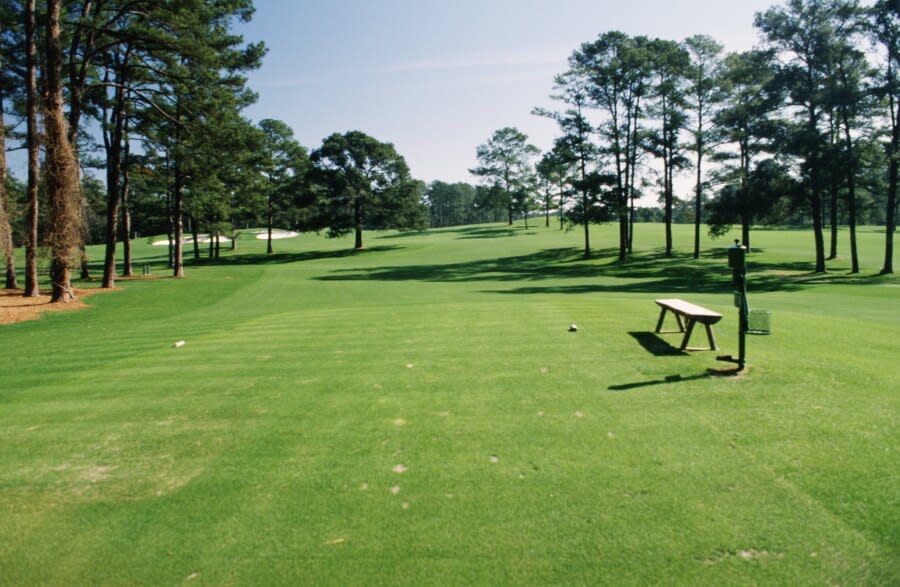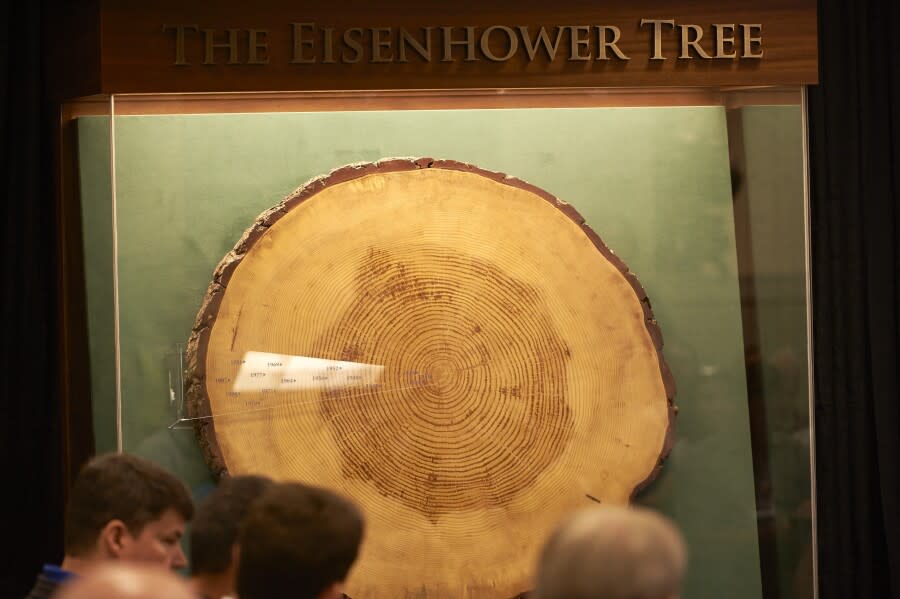'I hit it so many times, it fell': Remembering the Eisenhower Tree, a decade later

AUGUSTA, Ga. – When it comes to the Eisenhower Tree’s demise, Ben Crenshaw jokingly pleads guilty.
“I hit that tree so many times in my life,” Crenshaw said, “I always said, I hit it so many times, it fell down.”
Ultimately, it was an ice storm, 10 years ago, that destroyed the 65-foot-tall loblolly pine, which sat on the left side of Augusta National Golf Club’s par-4 17th hole, some 210 yards from the tee box, and was believed to be as many as 125 years old.
“The loss of the Eisenhower Tree is difficult news to accept,” said Billy Payne, the club’s chairman at the time. “We have begun deliberations of the best way to address the future of the 17th hole and to pay tribute to this iconic symbol of our history.”
The iconic, yet often infuriating tree received its nickname because of former President Dwight D. Eisenhower’s disdain for it. He is said to have met with chairman Clifford Roberts in 1956 and asked to have the pine chopped down. Roberts refused.
Over the years, the Eisenhower Tree affected many a tee ball, especially after the hole was lengthened to 425 yards after the 1998 Masters. (It now plays 440 yards long.)
Perhaps the most notable run-in with the pine was Tiger Woods during the third round of the 2011 Masters. While playing his second shot from the pine straw and an awkward stance under the tree, Woods lost his footing, and though Woods went on to save par and finish T-4, he sustained injuries to this left knee and Achilles tendon. He’d withdraw from his next start, only get through nine holes of The Players and didn’t play again until that August.

The year after the tree fell, Woods called it “eye-opening” to see the hole without the Eisenhower Tree – and the smaller pine behind it.
“I loved it the way it was,” Woods told The Associated Press in 2015. “That tree, I’ve hit it too many times, trust me. I’ve had my issues on that hole with that tree. But I thought it was a fantastic hole. It’s iconic, that tree, and I don’t think you can ever, ever replace it.”
Crenshaw, a two-time winner of the green jacket, remembers one time, during the 2006 Masters, when he hit the pine before topping his next shot, with a 4-wood, and leaving himself a full 9-iron to the flag. He’d then sink a 25-footer to save par.
“It was a detriment, and it was so tall,” Crenshaw said. “If you didn’t catch one solid, you were going to hit the tree. But it was a great hazard.”
And an aiming point, notes Tom Watson, a two-time Masters winner.
“I remember using it as a target,” Watson said. “If I hit it off the tee right over the right center of the tree, it was a perfect lie, right in the middle of the fairway.”

The most bizarre story involving the tree came via 1973 Masters winner Tommy Aaron, who said one year he got his ball stuck in the branches and had to re-tee. The next day, Aaron says, he was playing the hole when his ball – a Pinnacle with his markings – fell out of the tree. Jack Nicklaus was reportedly told the story and was skeptical.
“I know it was my ball,” Aaron told The Augusta Chronicle.
Ian Woosnam, the 1991 Masters champion, boasts that he never had an issue with the pine.
“I could hit it over the thing,” said Woosnam, who certainly wasn’t alone.
Patrick Reed, who won his Masters four years after the tree’s removal, never saw it in competition, though he did play Augusta National twice while attending Augusta University. Both times, Reed says, were in the winter.
“It wasn't flying it over the tree ever,” Reed recalls. “If anything, you're landing and bouncing it to it. I was under it once, and I was way right of it the other time I played. I only played it twice. … But, yeah, it's kind one of those holes that even without the tree there, it's so narrow and just seems like the ball just starts bouncing around there, and even without the obstacle … that hole is one of those you can't take lightly.”
The stats back up Reed’s sentiment: The scoring average on No. 17 since 2015 is 4.179, higher than the all-time average on the hole (4.161).
Bubba Watson won the final Masters played with the Eisenhower Tree intact, in 2014. That next year, at the Champions Dinner, Watson and the other past winners were gifted a plaque made from pieces of the fallen pine. (Other portions of the tree are on display at Berckmans Place, the glamorous hospitality area left of No. 5, and the Eisenhower Presidential Library in Abilene, Kansas.)

Watson and other champs said they keep the memento in prominent places at their homes.
“It's an honor to have that up in my house to remember the tree and history and be part of it,” Watson said. “I became a past champion right before that happened. It was like losing a member of this club, and so being a part of an honorary membership of this club, it's cool to have that plaque and memories.”
Crenshaw says there’s another reminder of Ike’s Tree: A table made from its wood that sits in the clubhouse’s wine cellar.
“It’s gorgeous,” Crenshaw said.
Just like the tree, even when it was swatting down his drives.

